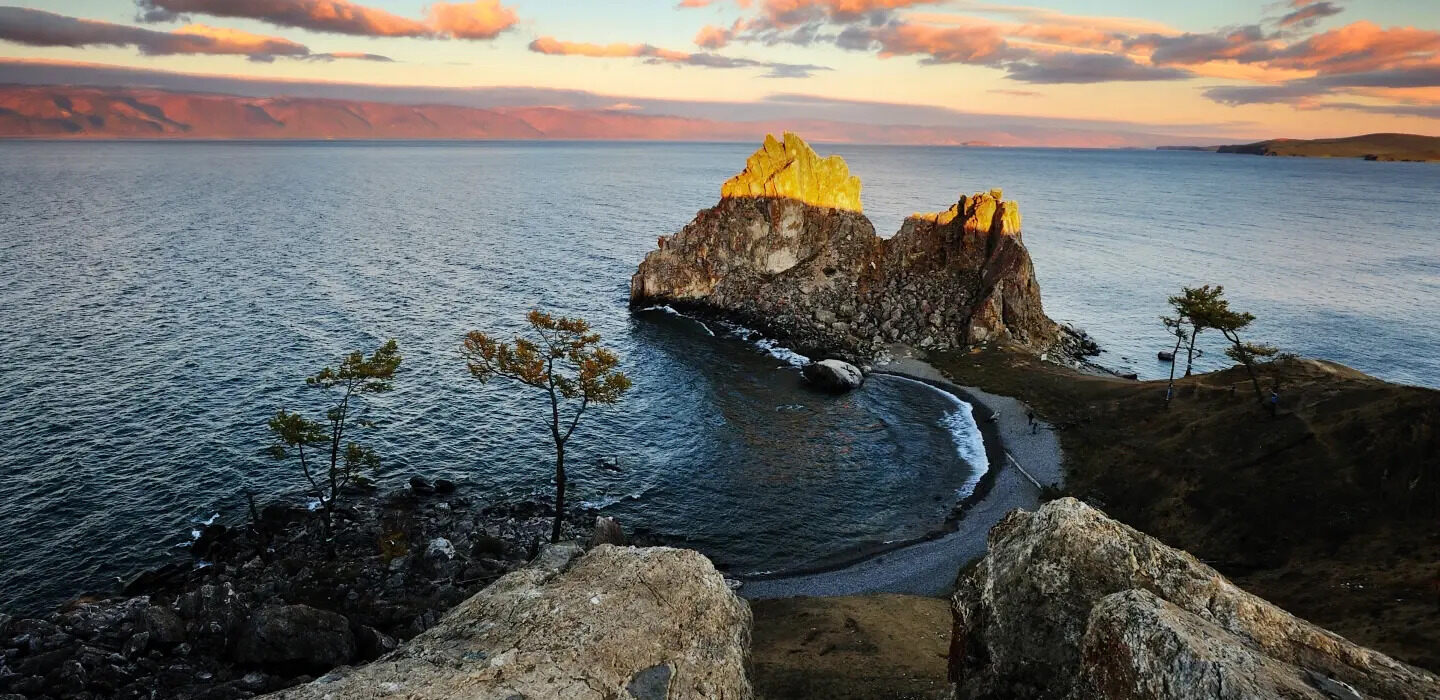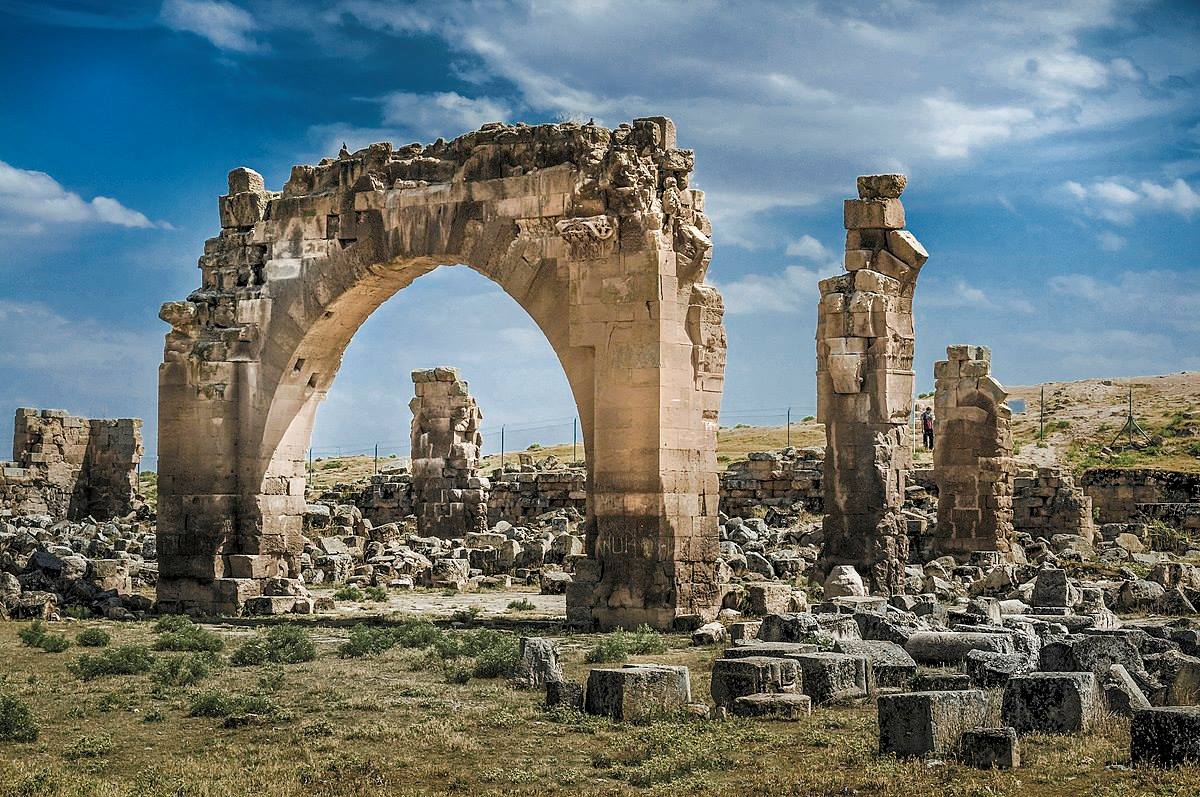
Why is Lake Baikal so special? Imagine a place where crystal-clear waters stretch as far as the eye can see, surrounded by towering mountains and teeming with unique wildlife. Lake Baikal, located in southern Siberia, Russia, is not just any lake. It's the world's deepest and oldest freshwater lake, holding about one-fifth of the planet's fresh surface water. With over 2,600 species of plants and animals, many found nowhere else, it's a biodiversity hotspot. From the mysterious Baikal seal to the ancient geological formations, every corner of this lake tells a story millions of years in the making. Dive into these 35 amazing facts about Lake Baikal and discover why it's a natural wonder like no other.
Key Takeaways:
- Lake Baikal, in southern Siberia, Russia, is the oldest freshwater lake on Earth, with crystal-clear waters and unique species. It's the deepest lake, holding one-fifth of the world's fresh surface water.
- Baikal's vastness, unique geological setting, and rich biodiversity make it a natural wonder. Its clear waters, ancient origins, and ongoing scientific research highlight its global importance.
Location and Size
Lake Baikal, a natural wonder in southern Siberia, Russia, is a marvel of nature. Its vastness and unique geographical features make it a subject of fascination.
- Location and Size: Lake Baikal spans an impressive 31,722 square kilometers (12,248 square miles), making it the seventh-largest lake by surface area in the world.
Depth and Volume
Despite its relatively small surface area compared to other large lakes, Baikal's depth and volume are astounding.
- Depth and Volume: Baikal is the deepest lake in the world, with a maximum depth of 1,642 meters (5,387 feet). It holds about 23,615.39 cubic kilometers (5,670 cubic miles) of water, which is roughly one-fifth of the world's fresh surface water.
Age and Geological Significance
Lake Baikal's ancient origins and unique geological setting provide valuable insights into Earth's history.
-
Age: Estimated to be between 20 and 25 million years old, Baikal is the oldest existing freshwater lake on Earth.
-
Geological Significance: Situated in a rift valley created by the Baikal Rift Zone, the lake's sediments offer a window into climatic variations over millions of years.
Water Characteristics
Baikal's water is renowned for its clarity and oxygen levels, making it a unique aquatic environment.
-
Water Clarity: Known for its crystal-clear waters, Baikal's transparency can reach up to 30-40 meters (100-130 feet) in winter and 5-8 meters (15-25 feet) in summer.
-
Oxygen Levels: Rich in oxygen even in its deepest sections, Baikal stands out from other stratified bodies of water like Lake Tanganyika and the Black Sea.
-
Water Temperature: The water temperature varies significantly, from freezing near the ice-covered surface in winter to about 3.5-3.8 °C (38.3-38.8 °F) at depths of 200-250 meters (660-820 feet).
Ice Formation and Islands
Baikal's ice formations and islands add to its unique landscape and ecological diversity.
-
Ice Formation: Ice on Baikal can reach a thickness of 0.5 to 1.4 meters (1.6-4.6 feet), with some areas exceeding 2 meters (6.6 feet) due to hummocks.
-
Islands and Coastline: Surrounded by mountains, Baikal contains 27 islands, with Olkhon Island being the largest at approximately 72 kilometers (45 miles) long.
Rivers and Outflow
The lake's inflowing and outflowing rivers play a crucial role in its ecosystem.
-
Inflowing Rivers: More than 330 rivers flow into Baikal, including the Selenga, Barguzin, Upper Angara, Turka, Sarma, and Snezhnaya rivers.
-
Outflowing River: The Angara River is the only river that drains directly out of Baikal, flowing into the Yenisey River.
Unique Species
Baikal's unique species, many of which are endemic, contribute to its rich biodiversity.
-
Unique Species: Home to over 2,600 species of plants and animals, many of which are found nowhere else, Baikal is a biodiversity hotspot.
-
Baikal Seal (Nerpa): The Baikal seal, the only seal species living entirely in freshwater, can stay underwater for up to an hour due to its blood's high oxygen capacity.
-
Golomyanka Fish: The golomyanka fish, found only in Baikal, gives birth to live young and serves as a primary food source for the Baikal seal.
Hydrothermal Vents and Environmental Concerns
Baikal's hydrothermal vents and environmental challenges highlight its unique geological conditions and the need for conservation.
-
Hydrothermal Vents: Deep-sea vents in Baikal support sponges, snails, shrimp, and bacteria, similar to those in deep-sea environments.
-
Environmental Concerns: Human activities like mining, shipbuilding, fishing, and paper manufacturing pose significant pollution threats to Baikal.
UNESCO World Heritage Site and National Parks
Baikal's recognition as a UNESCO World Heritage site and the establishment of national parks underscore its global importance.
-
UNESCO World Heritage Site: Designated a UNESCO World Heritage site in 1996, Baikal's natural and cultural significance is globally recognized.
-
National Parks and Reserves: Several nature and wildlife reserves and national parks around Baikal protect its unique ecosystem.
Climate and Freezing Period
Baikal's climate and freezing period contribute to its distinct seasonal changes.
-
Climate: The climate around Baikal is milder than the rest of southern Siberia, with winter air temperatures averaging -6 °F (-21 °C) and August temperatures averaging 52 °F (11 °C).
-
Freezing Period: The lake surface freezes from January to May or June, with ice thickness varying from 0.5 to 1.4 meters (1.6-4.6 feet).
Water Characteristics and Unique Wildlife
Baikal's water characteristics and unique wildlife make it a natural wonder.
-
Water Characteristics: Baikal's water is very clear, allowing visibility of up to 40 meters (130 feet) on a good day. It has low salinity and contains few minerals.
-
Unique Wildlife: The lake is home to a variety of wildlife, including bears, elk, lynx, and over 320 bird species. Two-thirds of the lake's species are found nowhere else on Earth.
Fish Species and Economic Activities
Baikal's diverse fish species and economic activities highlight its ecological and economic importance.
-
Fish Species: About 50 species of fish inhabit Baikal, including the omul salmon, grayling, lake whitefish, and sturgeon. The most numerous fish species are the 25 species of gobies.
-
Economic Activities: Industries along Baikal's shores include mining (mica and marble), cellulose and paper manufacturing, shipbuilding, fisheries, and timber extraction.
Geological Features and Proval Bay
Baikal's geological features and the creation of Proval Bay showcase its dynamic landscape.
-
Geological Features: The sedimentary strata on Baikal's floor can be as thick as 20,000 feet (6,100 meters). Breaks in the Earth's crust produce hot mineral springs, and occasional severe earthquakes shape the lake's landscape.
-
Proval Bay: A severe earthquake in 1862 created Proval Bay in the northern Selenga delta, inundating about 77 square miles (200 square kilometers) of land.
Shoreline and Islands
Baikal's meandering shoreline and numerous islands add to its scenic beauty.
-
Shoreline Features: Baikal's shoreline runs for approximately 1,300 miles (2,100 kilometers), with large indentations at bays like Barguzin, Chivyrkuysky, and Proval, as well as Ayaya and Frolikha inlets.
-
Islands and Islets: The lake contains some 45 islets and islands, with Olkhon Island being the largest at approximately 270 square miles (700 square kilometers).
Sediment Cores and Gas Hydrates
Baikal's sediment cores and gas hydrates provide valuable scientific insights.
-
Sediment Cores: Cooperative studies of deep-drilling core sediments in the 1990s provided a detailed record of climatic variation over the past 6.7 million years. Longer sediment cores are expected in the near future.
-
Gas Hydrates: Baikal is the only confined freshwater lake where direct and indirect evidence of gas hydrates exists, indicating its unique geological conditions.
Crystal-Clear Ice and Winds
Baikal's crystal-clear ice and regular winds contribute to its unique environment.
-
Crystal-Clear Ice: In winter, the lake freezes over, and large blocks of transparent ice form on its surface. These ice hummocks can glow like turquoise gemstones when sunlight hits them.
-
Winds and Weather: Regular winds in Baikal's rift valley contribute to the lake's unique microclimate and weather patterns.
Biodiversity Hotspot and Scientific Research
Baikal's status as a biodiversity hotspot and ongoing scientific research highlight its ecological importance.
-
Biodiversity Hotspot: More than half of the species found in Baikal are unique to this location, making it a biodiversity hotspot similar to the Galápagos Islands.
-
UNESCO Designation: The UNESCO designation recognizes Baikal's natural beauty, cultural significance, and importance as a protected area.
-
Scientific Research: Ongoing scientific research at Baikal continues to uncover its secrets, from studying climatic variations through sediment cores to understanding the unique adaptations of its endemic species.
Lake Baikal: A Natural Marvel
Lake Baikal stands as a testament to nature's wonders. Its depth, age, and clarity make it a unique gem on our planet. Home to over 2,600 species, many found nowhere else, this lake is a biodiversity hotspot. The Baikal seal and golomyanka fish are just a couple of its unique inhabitants. Despite its beauty, Baikal faces environmental challenges from human activities. Recognized as a UNESCO World Heritage site, efforts are ongoing to preserve its pristine condition. The lake's geological features, like its deep-sea vents and gas hydrates, offer valuable insights into Earth's history. With its crystal-clear waters, diverse wildlife, and rich geological history, Lake Baikal continues to captivate scientists and travelers alike. Protecting this natural wonder ensures future generations can appreciate its unparalleled beauty and significance.
Frequently Asked Questions
Was this page helpful?
Our commitment to delivering trustworthy and engaging content is at the heart of what we do. Each fact on our site is contributed by real users like you, bringing a wealth of diverse insights and information. To ensure the highest standards of accuracy and reliability, our dedicated editors meticulously review each submission. This process guarantees that the facts we share are not only fascinating but also credible. Trust in our commitment to quality and authenticity as you explore and learn with us.


